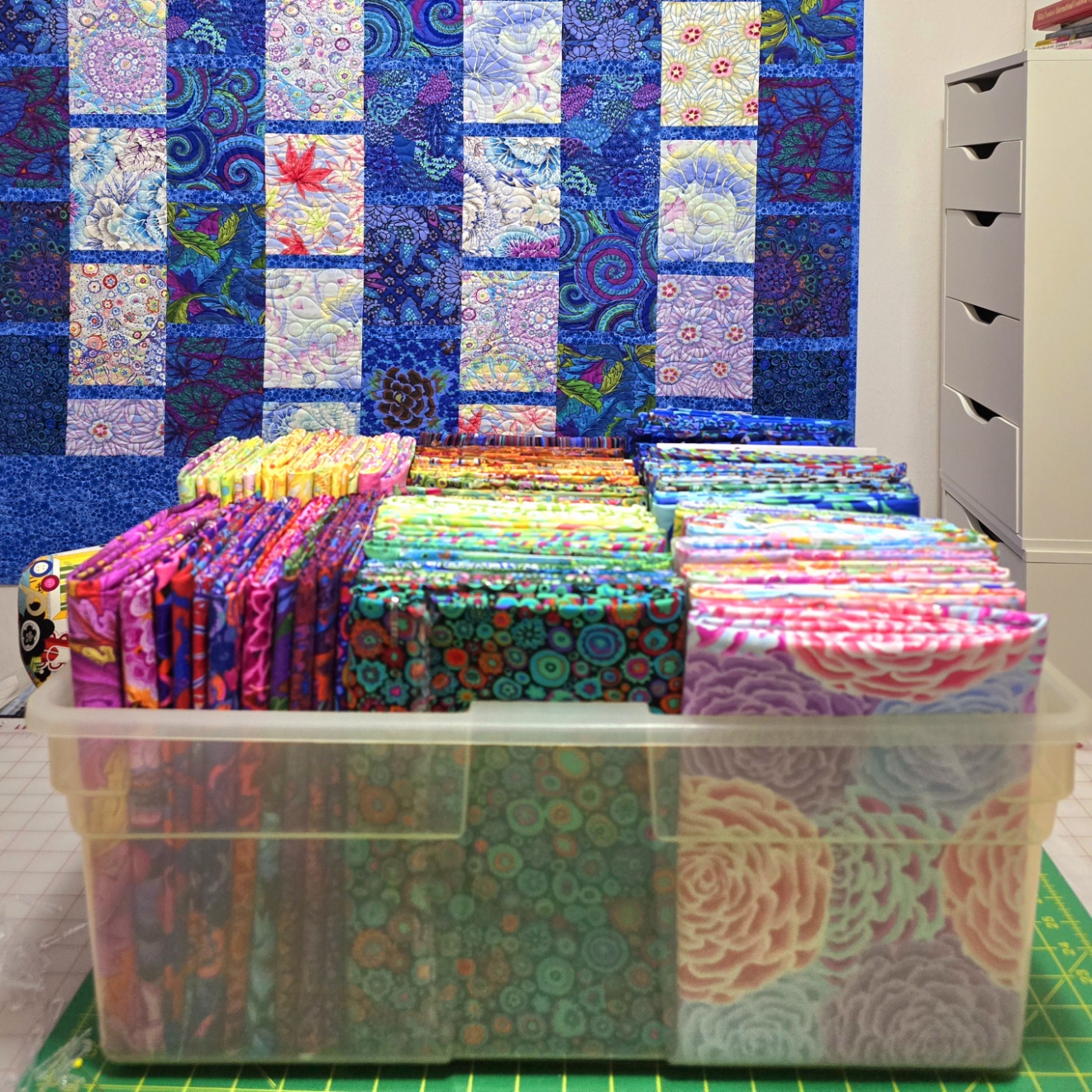
Read on if you would like to know more about how I buy fabric and the process I use for storing it.
Just looking for links? Click here for the Comic Book Boards and click here for the plastic clips I am using. If you need more clips (like me), you can buy a larger quantity here. These are affiliate links – they will not affect the price you pay but will help support my site.
Many years ago, Grandma Baldwin shared with me her philosophy on how to buy quilting fabric.
She recommended that I think about it the same way she thought about buying tubes of paint at the art supply store. It has been many years, so I don’t remember the exact words; but I’ll paraphrase: “I don’t know what paintings I’m going to create when I buy a particular tube; I just know that I need that color and that I can use it with the other colors I have to create the paintings I want to create.”
“When I see paint (or fabric), I see POTENTIAL.”
Decades later, that idea still resonates with me. As a general rule, I do not have a fixed idea in mind when I purchase fabric unless it happens to be a large piece for a specific border or backing. Instead, I think about the types of quilts I like to make, the styles of fabrics I like to work with, and the general amounts I use most often. I am more likely to use twenty or more fabrics in the same quilt than just 3 or 4, so I most often buy a half yard, one yard, or one and a half yards at a time. That will give me plenty of options!
Over the years, I have also learned how to recognize which fabrics will “play well” with others and which designers tend to produce collections that will work together with fabrics from other collections and designers. That helps me avoid amassing “orphan” fabrics that do not coordinate with anything else I have.
Please remember that what works best for one person may not be the best solution for someone else – always consider your particular circumstances (including budget and available storage space) to decide what will be best for you.
The potential downside of an extensive fabric collection is that if you do not have a good organizational system, you might not know (or be able to find) what you have! (Ask me how I know this…)
I have been aware of folks using Comic Book Boards for fabric organization and storage for many, many years, but I did not try it myself until just recently. I am a convert, for sure!
Since most of my fabric is now wrapped compactly and is consistent is size, I can fit about three times as much fabric on my shelves as before while still being able to clearly find what I need.
There are lots of different ways to wrap the fabric around the acid-free pieces of cardboard.
Here are the key factors for me:
- I wanted a fuss-free method that would be relatively quick to implement.
- I needed to be able to easily find a specific fabric or grouping of fabrics.
- I wanted to minimize how much pressing would be needed before I could accurately rotary cut a fabric after I unwrapped it from its board.
Here is the method I chose for half yards and larger:
I begin by folding the fabric the same way I would for rotary cutting: selvage to selvage, and then in half once more so that the folded fabric measures around 10-11” high. I take care to fold with the grain of the fabric so that I do not have ripples or pulling along the fold lines.
Then I lay my board on top of the fabric and start wrapping.
I either leave the end of the fabric flat and clip in place as is OR fold the raw edge under by an inch or so and then clip in place. It just depends on how much fabric there is and how raggedy the edge is. The clips do not go around the board – just around about 4 layers of fabric.
The wrapped fabric looks great displayed lengthwise; however, I am rotating most of my fabric stacks to conserve space.

I’m getting there!
I have wrapped some of my fat quarters, too – although not all, since I am not sure yet if I’ll have enough boards.
I have systems for storing scraps and fabric smaller than a fat quarter – but that is a topic for another day. 😉





